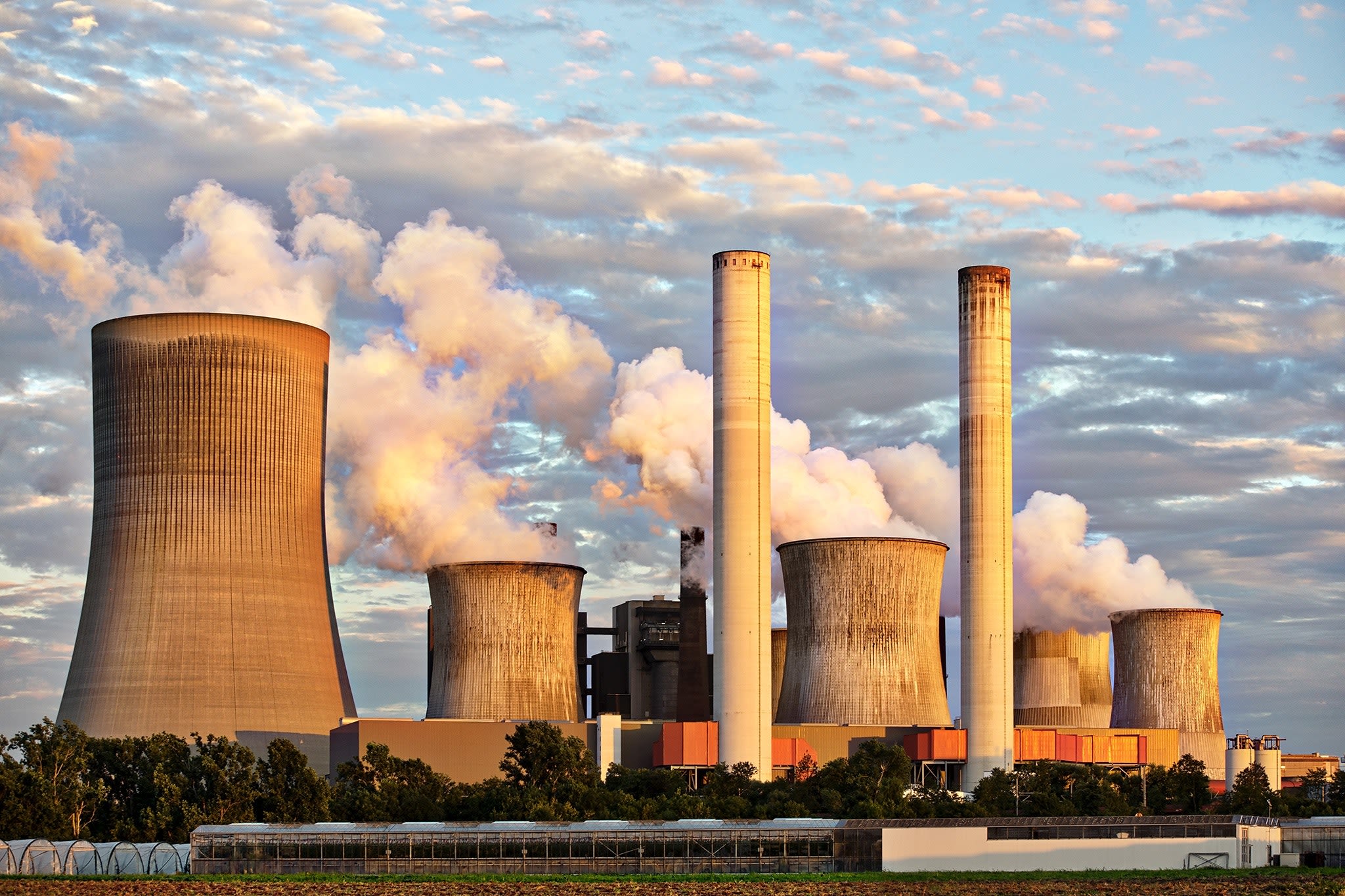The next generation of impact investments
Impact investing is arguably the least understood option within the ESG eco-system, but what are the next generation of opportunities in the space?


Impact investing is probably the fastest emerging of the various environmental, social and governance investing trends, but also among the least understood.
The trend involves investing only in companies that the investor believes will make a positive contribution to the world, rather than simply not having a negative impact, as is the case with many other types of ESG investing.
But how does one ensure the portfolio is diversified, and also in touch with the latest client priorities?
This guide will look at those issues and more, and comes with 30 minutes' CPD.
Clients increasingly interested in impact investing funds
Clients are becoming more interested in impact investing, according to a poll of FTAdviser readers.
Other research likewise indicates a rise in impact investing. A survey of market participants from the Impact Investing Institute found three in five said the UK impact investment market had grown by more than 10 per cent a year over the past couple of years.
It also found that three-quarters of respondents planned to increase the amount of capital they allocate to impact investments, by more than 10 per cent, in the next five years.
Meanwhile The Big Exchange, a DIY impact investment platform, has seen its customer base quadruple over the past year. Hargreaves Lansdown also saw a 106 per cent increase in the number of impact fund net buys in 2021 when compared to the previous year, according to the platform.

The evolution of impact investing
Impact investing is a branch of ESG investing that focuses on investments with the specific intent to generate positive, measurable social and environmental impacts on society, alongside a financial return, according to the CFA Institute.
This could be said to differ from sustainable investing, which seeks to make investments that are at worst neutral in terms of their impact on wider society, and from ethical investment funds that focus on exclusions, that is, they exclude those companies they determine to be doing specific harm to society, but do not have a 'positive screen', meaning they do not seek to find companies making a specifically positive impact.
“Impact investors have previously, and still are, focused on trying to tackle unmet needs, which is where the UN sustainable development goals come in,” says Louisiana Salge, senior sustainability specialist at EQ Investors.
“It is important to remember that impact investors are not going after the next cool thing. Their mandate is to serve unmet needs and therefore if the SDGs are not yet met, there’s a need for them to continue to channel capital towards those.”
Biodiversity and climate change
Given that climate change is one of the biggest challenges we are facing today, the industry as a whole has mostly focused on decarbonisation, says Ingrid Kukuljan, head of impact and sustainable investing at Federated Hermes.
Matt Evans, a portfolio manager at fund house Ninety One, agrees that climate change has tended to be the focus of most impact funds. “I think it’s straightforward, it was very clear that there was a requirement to operate in those areas and it was quite easy to measure.”
Alternative energy and energy efficiency were found to be the most common sources of positive impact revenue in March, in an analysis by Worthstone of 380 funds according to environmental and social themes.
Worthstone is a portal that enables financial advisers to compare ESG funds according to a range of criteria.
So, how much positive impact revenue is derived from each environmental and social theme?
“Overall investors have allocated more capital to environmental themes,” says Gavin Francis, founder and director at Worthstone. “We would anticipate that trend accelerates in light of the recent world events we see unfolding, resulting in governments seeking to accelerate their move away from a reliance on oil and gas.”
Sarah Gordon, chief executive of the Impact Investing Institute, says that the next area of growth within the impact investment universe is likely to be biodiversity, that is, the natural habitats of the world.
Alex Jarman, acting chief executive at Investing for Good, says funds are now coming to market that provide capital to land managers expanding woodland and restoring peatlands, which store carbon.
“The area for which we see the greatest latent investor interest is biodiversity and conservation finance,” he concurs.
A spotlight on social impact
Beth Houghton, head of impact fund at Palatine, says the environment will continue to be a focus of impact investing, but adds that the current UK government’s ‘levelling up’ agenda will place more emphasis on social issues.
“You can see that Covid-19 highlighted a lot of inequalities that we’ve got in society. And we’re not moving the needle maybe on that social side quite as quickly as we are on the environmental side.”
Louise Kooy-Henckel, investment director at Wellington Management, describes the influence of the pandemic on impact investing as unsurprising.
“Covid-19 has touched many investors’ impact themes; not just health, but also bridging the digital divide, financial inclusion, access to education and job training, safety and security and affordable housing.”
Social impact investing in the UK has increased by almost eight-fold over nine years, from £833mn in 2011 to £6.4bn in 2020, according to figures from Big Society Capital. The social impact investment platform found consistent year-on-year growth but with a particular acceleration between 2019 and 2020, the year of the pandemic.
You can see that Covid-19 highlighted a lot of inequalities that we’ve got in society. And we’re not moving the needle maybe on that social side quite as quickly as we are on the environmental side
Chris Iggo, chief investment officer for core investments at AXA Investment Managers, agrees that social issues are becoming more important.
“I think themes around diversity and inclusion are really getting a lot of traction now, and what I would broadly call social progress or access. So, investing in companies that make it easier for people to access things like healthcare, banking services and telecommunications.
“These are things that in some, particularly emerging market, areas aren’t freely available to societies. And there are companies involved in developing technologies that improve that access.”
Social property funds are another area of growth that fit within the social impact theme, says Stephen Muers, chief executive at Big Society Capital. This involves the provision of capital to providers of housing for those in particular need.
Social lending is also gaining traction, adds Muers. This includes small unsecured loans, charity bonds and bank loans that can be used by charities, social enterprises and social-purpose organisations. “These enterprises are embedded in our communities and play a huge role in the ‘levelling up’ and post-Covid recovery,” he notes.
What influences impact investment opportunities?
The current UK government’s levelling up programme is one example of how government policy can bring about opportunities to invest with impact.
“Government policy is definitely a driver,” says Evans at Ninety One. “I think you’ve seen that in areas like climate change, where there were subsidies that encouraged investment.”
Kooy-Henckel highlights how governments alone cannot solve every pressing climate and social issue, and how the pandemic has triggered social expectations of businesses to move beyond profit and take greater responsibility for people and the planet.
It is important to remember that impact investors are not going after the next cool thing
Houghton says: "I think it is an issue for consumers, so they’re wanting to see that the companies they’re buying from are ethical and are doing the right thing. I think people are also choosing to work for companies that are doing the right thing, and I think in order to attract the best employees, you have to take environmental and social issues seriously nowadays.”
Investors will therefore need to increase focus on those issues, as it is likely that the companies best able to attract quality staff will beat their competitors, and one of the metrics that may entice employees is if they believe in the employers' practices and priorities.
In this way, Kooy-Henckel says that the investment priorities of a client and the social impact priorities are ultimately aligned, rather than in conflict.
Amy Clarke, chief impact officer at Tribe Impact Capital, notes: “We’re also seeing the rise of the corporate governance narrative – what the purpose of business is. The shift from shareholder primacy to stakeholder alignment is expected to gain more traction as the purpose of business is questioned more widely.”
But Michele Giddens, co-founder of Bridges Fund Management, which provides impact investing products, says something more profound is behind the increased popularity of impact investing.
She says the biggest reason behind the rise of impact investing is that it is “perfectly aligned with some of the most powerful macro trends” in the global economy.
“There’s an [increased focus on decarbonising] the economy, [re-skilling] the workforce for the 21st century, and [building] fit-for-purpose healthcare systems. And this is not just a moral or social imperative. For investors, it’s also the best way to invest in sustainable long-term growth. It’s drawing more capital and more talent into the space.”
Giddens says the next stage of growth for the impact investing sector could come from improved disclosure and standardised definitions. This is a persistent issue for advisers looking at the space, but also something that is very common across all emerging asset classes and themes.
Climate action, avoiding carbon emissions and any other drivers of climate change is, and will, remain one of the biggest investments
EU regulators introduced the Sustainable Finance Disclosure Regulations for funds marketed in that jurisdiction last year; the UK government is presently consulting on its own set of regulations, which are likely to focus on taxonomy, that is, definitions of the various terms used in the ESG investing marketplace.
There is as yet no clarity on when the government’s proposals in this area will be published, or whether they will be rules or principles based.
Rob Appleby, founder of the Cibus funds, likewise says that the ability to measure both commercial returns and impact initiatives has enabled the ‘modern’ impact investor to expand their remit to include themes such as novel farming, food waste and alternatives to plastic.
Environment still dominates
While social impact investing is a rapidly growing area of the market and of client concern, it is unlikely that it will usurp climate-related matters as the primary focus of impact investing funds in the near term, according to EQ Investors' Salge.
"Climate action, avoiding carbon emissions and any other drivers of climate change is, and will, remain one of the biggest investments".
The World Health Organization states its belief that, climate change affects the social and environmental determinants of health – clean air, safe drinking water, sufficient food and secure shelter – and is the biggest health threat facing humanity.
From an investment point of view, the issues and opportunities around climate investing are well understood, and a range of portfolios exist offering clients exposure to these.
The evolving technology aiming to provide solutions and the evolving understanding of the issues means it is a story with a long way to run, and one that will impact client portfolios, whether impact focused or not, for a long time to come.
Chloe Cheung is a features writer at FTAdviser






Is ESG increasing our fuel bills?
I would love to say that ESG and impact funds have forced fossil-fuel companies to dramatically change their investment plans over the past 10 years. Unfortunately, that has not been the case. Pressure on ‘big oil’ encouraged it to invest heavily in ESG marketing and to make long-range plans to transition away from fossil fuels – but little else has changed.
In fact, this lack of change is a key reason why we invest in innovation instead of transition – and why we focus on disruption instead of engagement.
Energy prices determine what oil companies do – not ESG funds
The reality is that weak fossil fuel prices deterred investment in oil and gas projects over the past five years or so. The combination of a decade-long commodities boom between 2000 and 2010 (driven by the industrialisation of China) and the subsequent US shale-oil boom resulted in significant over-investment. The market became oversupplied with oil and gas, leading to a down cycle in capital expenditure.
So what external pressure there has been on oil companies to reduce investment in new fields fitted neatly with the desire of their boards to rebuild their balance sheets and generate cash.
The simple fact is that most new oil and gas projects take up to 10 years to come online – and energy prices over the past few years have been too low to justify investing in new fields.
The oil-price shock was not caused by responsible investing nor is it due to the influence of impact investors, climate activists or left-wing pressure groups.
Instead, the energy shock is a direct function of building our economies on a geopolitically unstable and finite source of energy whose marginal supply is controlled by a cartel (OPEC) of largely undemocratic regimes.
As should be evident from recent write-downs (and climb-downs), many of the biggest oil companies were highly exposed to Vladimir Putin's regime. This should not be a surprise. ‘Big oil’ can offer little historical evidence of wise or ethical capital allocation.
The terrible humanitarian crisis unfolding in Ukraine means that three powerful and interconnected factors are aligning to make a transition away from oil and gas an environmental, social and political imperative:
- We must reduce our carbon emissions dramatically to keep global warming below 1.5C.
- We must reduce consumer energy-price volatility and inflation.
- We must achieve security of energy supply and energy independence from undemocratic petrostates.
These imperatives all lead us towards the same clear solutions. We must invest in:
- wind energy;
- solar energy;
- battery storage;
- battery electric vehicles;
- grid infrastructure;
- heat pumps; and
- green hydrogen.
To this point, the world has been frustratingly slow to do this. As such, the necessary capacity of sustainable, stable, democratic and lower-cost sources of energy cannot meet our needs today. So we will (unfortunately) need to use non-Russian sources of fossil fuels to bridge this supply gap in the meantime.
But these are the solutions that will ultimately solve the horribly unsustainable predicament we find ourselves in. So we are focused on investing in these technologies, rather than blaming ESG funds for the insecurity and volatility that are the inevitable consequences of our dependence on fossil.
Craig Bonthron is a fund manager and part of the impact equities team at Artemis

